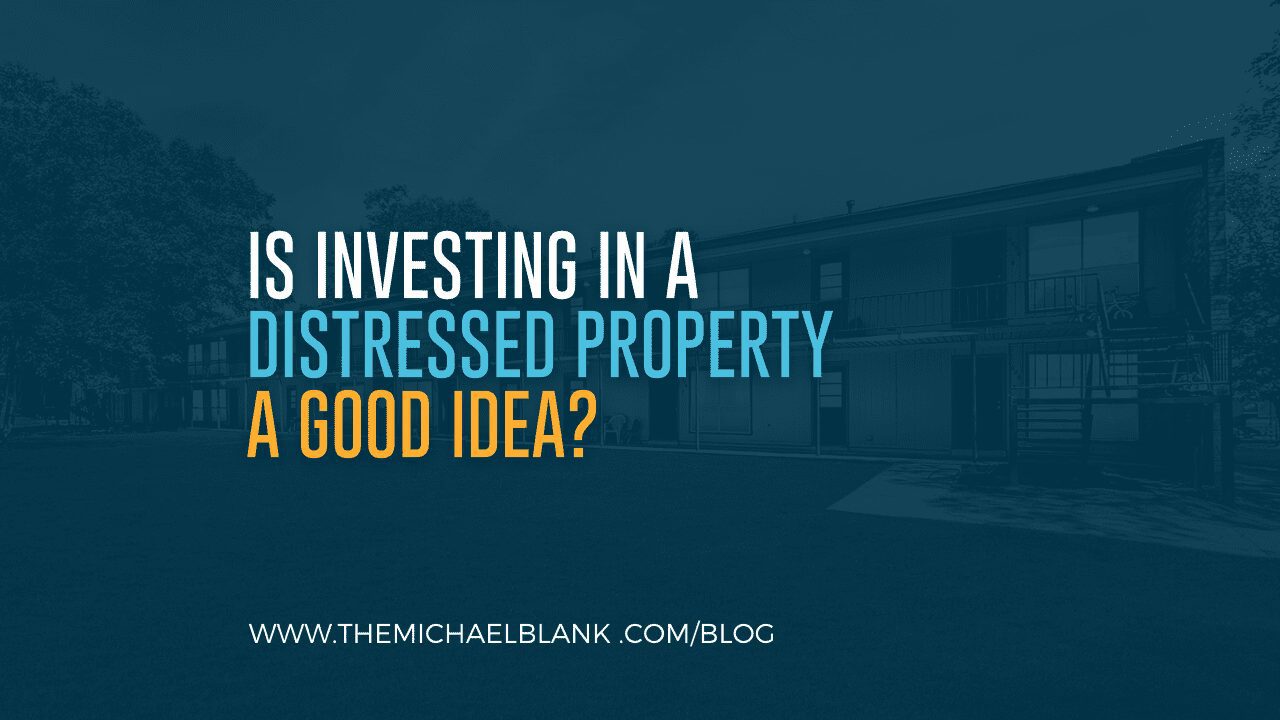Make sure you download ALL my resources for FREE at this link: https://themichaelblank.com/vault
Is Investing in a Distressed Property a Good Idea?
In real estate investing, there are different categories, or asset classes.
Class A properties are new, built in the last five years, and tend to be luxury buildings with with high-end amenities. With Class A, you have higher rents, better tenants, and fewer needed repairs.
Class B properties are typically less than twenty years old, in desirable locations and don’t need much in terms of renovation except for possibly upgrading the units or the curb appeal.
We like Class B because in an upmarket, people are going from Class C and upgrading into Class B, and in a downmarket, people go from Class A into Class B.
That leaves Class C, which is more affordable housing, typically more than thirty years old. These properties tend to have a dated exteriors and few, if any, amenities. They also tend to have more deferred maintenance, which means they will need a new roof or parking lot or utilities.
There’s a difference between stable properties, stable value-add properties, and distressed properties. You know we like the first two, but what about distressed properties? Are they a good investment?
At Nighthawk, we’re syndicating deals, and it’s hard to syndicate a deal if there’s no problem to solve. We’re trying to solve a problem with the property and by doing that we can make community lives better and the investor’s lives better.
To fix a problem, you tend to be on the value-add side of things.
The stable properties are the ones where everything is great. The units are full, rents are optimized, there’s a great property manager – it’s turnkey. It takes very little work. But you tend to have a hard time finding ways to add value to a turnkey property.
Turnkey properties are like the pot of gold at the end of the rainbow, but they’re hard to find.
Moving down the chain, we have value-add properties. This means either the property has physical distress – the building itself has problems – or it has a tenancy distress. Tenancy distress is a little easier to solve because you can get the right tenants in there. So that’s a lighter value-add.
The heavier value adds are the properties that have a lot of problems, or more complicated problems. It’s more difficult to get the banks to finance a distressed asset, because it’s not producing cash on day one.
Deep value-adds are significant distress. Maybe the whole building is empty, maybe there was a fire, maybe it’s difficult geography.
So, yes, distressed properties can be a good investment, but you have to examine the type and level of distress in order to calculate your risk.
The sweet spot for us is with lighter value add deals, where there are some problems – like low occupancy or minor tweaks needed – but the problems are relatively easy to solve.
